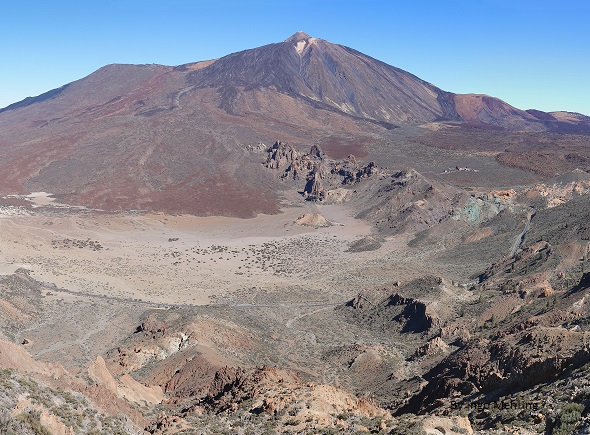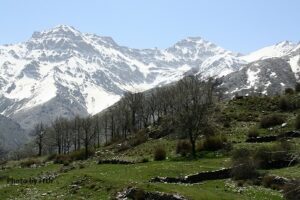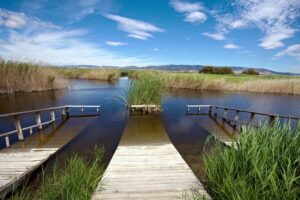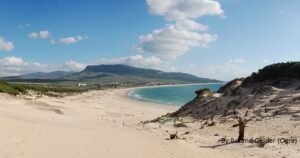Canary Islands Guide
Volcanic Beauty and Untamed Nature: The Canary Islands' Four National Parks
The Canary Islands are not only famous for their sunshine and beaches — they’re also home to some of Spain’s most extraordinary national parks. Shaped by volcanic activity and isolated ecosystems, each of the four parks offers a completely different landscape: from surreal lava fields to lush prehistoric forests and towering volcanic peaks.
Here’s an in-depth look at the four national parks in the Canary Islands — what you can expect to see, what to do, and how to get there from nearby towns and airports.
Teide National Park – Towering Over Tenerife

Location: Island of Tenerife
Nearest Cities: La Orotava, Puerto de la Cruz, Santa Cruz de Tenerife
What to Expect
Teide National Park is home to Mount Teide, Spain’s highest peak at 3,718 metres. The landscape is otherworldly: vast lava fields, craters, and strange rock formations stretch across a high-altitude plateau, all set within the caldera of a massive ancient volcano. It’s a UNESCO World Heritage Site and one of the most visited national parks in Europe.
Despite its harsh, moonlike appearance, the park harbours rare plant species like the striking Tajinaste Rojo, which blooms crimson in spring. Teide is also one of the best places in the world for stargazing, thanks to its altitude and minimal light pollution.
Things to Do
- Take the Teide Cable Car (Teleférico del Teide) to 3,555 m for panoramic views
- Hike to the summit of Mount Teide with a special permit
- Walk scenic trails such as Roques de García, Siete Cañadas, or Montaña Blanca
- Visit the Parador de Las Cañadas for a meal or overnight stay
- Join an evening astronomy tour or visit the Teide Observatory
Getting There
- By car: Accessible from both the north and south sides of Tenerife; approx. 1 hour from Puerto de la Cruz or Los Cristianos
- By bus: TITSA bus routes 342 (from Costa Adeje) and 348 (from Puerto de la Cruz) run daily to the park
- Guided tours: Numerous options from most tourist hubs, often including hotel pickup
Caldera de Taburiente National Park – La Palma’s Natural Fortress
Location: Island of La Palma
Nearest Towns: El Paso, Los Llanos de Aridane
What to Expect
At the heart of La Palma lies a gigantic collapsed volcanic crater — the Caldera de Taburiente. This vast bowl, rimmed by towering peaks, is filled with lush pine forests, waterfalls, and deep ravines carved by water and time. The park is ideal for hikers and nature lovers, offering one of the most dramatic landscapes in the Canary Islands.
The caldera’s interior feels remote and wild, but it’s surprisingly accessible. You’ll find centuries-old pines, colourful rock formations stained with minerals, and clear mountain streams.
Things to Do
- Hike down into the caldera from La Cumbrecita viewpoint or Los Brecitos trailhead
- See the Cascada de Colores, a multi-coloured waterfall deep in the valley
- Enjoy stargazing — La Palma is a certified Starlight Reserve
- Visit the Centro de Visitantes de El Paso for maps and trail info
Getting There
- By car: The main access points (La Cumbrecita and Los Brecitos) are within 20–30 minutes of El Paso or Los Llanos
- By bus: Regular routes run from Santa Cruz de La Palma to El Paso and Los Llanos; taxis or park shuttles are needed to reach trailheads
- From the airport: About 45 minutes by car; guided excursions also available
Garajonay National Park – The Enchanted Forest of La Gomera
Location: Island of La Gomera
Nearest Towns: San Sebastián, Hermigua, Agulo
What to Expect
Garajonay is a world apart — a misty, magical forest that feels more like the setting of a fairy tale than a subtropical island. The park preserves a vast stretch of laurisilva, a type of ancient evergreen cloud forest that once covered much of southern Europe. Walking through the shaded trails, with moss-covered trees and ferns all around, is a peaceful and immersive experience.
A UNESCO World Heritage Site, Garajonay is also criss-crossed by a well-maintained network of walking paths, making it one of the best places in the Canaries for easy to moderate hiking.
Things to Do
- Walk scenic trails such as El Cedro, Contadero–Alto de Garajonay, or Las Creces
- Climb to Alto de Garajonay, the island’s highest point (1,487 m), for panoramic views
- Spot endemic species of birds, reptiles, and plants
- Visit the Juego de Bolas Visitor Centre for interactive exhibits and a botanical garden
Getting There
- By car: Accessible via winding mountain roads from San Sebastián de La Gomera (about 40 minutes)
- By bus: Several local bus routes (GUAGUAS GOMERA) connect the park with nearby towns
- From Tenerife: Ferries run daily from Los Cristianos to San Sebastián; car hire or guided tours from the port are recommended
Timanfaya National Park – Lanzarote’s Volcanic Masterpiece
Location: Island of Lanzarote
Nearest Towns: Yaiza, Tinajo
What to Expect
Timanfaya is like nowhere else in Spain. Born from a series of violent volcanic eruptions in the 18th century, the landscape is surreal — endless lava flows, craters, and fiery red and black rock formations. It’s a true showcase of raw geology and a reminder that the earth is very much alive.
The volcanic soil is still hot just below the surface, and geothermal demonstrations at the visitor centre reveal just how powerful the forces beneath your feet remain.
Things to Do
- Join a coach tour along the park’s Ruta de los Volcanes — the only way to explore the heart of the park
- Watch geothermal demos at the Islote de Hilario visitor area (e.g., water erupting into steam)
- Eat a meal cooked by volcanic heat at the El Diablo Restaurant, designed by César Manrique
- Hike nearby trails like Tremesana Route (guided) or Coastal Route (self-guided with permit)
Getting There
- By car: Around 30–40 minutes from Arrecife or Puerto del Carmen
- By bus: Regular buses to nearby towns (Yaiza, Tinajo); local taxis or excursions needed from there
- Guided tours: Many companies offer half- or full-day trips including transport and interpretation
Tips for Visiting the Canary Islands’ National Parks
- Permits: Some areas (like the summit of Teide or Tremesana Trail in Timanfaya) require free permits — book in advance
- Best time to visit: Year-round! Winter offers clear skies and mild temperatures, while spring is best for flowers
- Transport: While hiring a car offers the most flexibility, each park is reachable via a mix of buses, taxis, ferries, and guided tours
- Visitor centres are an excellent first stop — they provide trail maps, advice, and safety updates
Each Canary Island national park is a world unto itself — whether you’re standing atop Mount Teide, walking through the clouds in Garajonay, hiking into La Palma’s ancient caldera, or staring into the lava fields of Timanfaya. Whichever you choose, you’re guaranteed an experience that’s both wild and unforgettable.
Related articles

National Parks of Andalucia – a nature lover’s paradise
Andalucia is home to some of Spain’s most stunning natural landscapes — from sweeping wetlands teeming with birdlife to snow-capped

Explore the wild heart of Spain – Castilla la Mancha’s National Parks
Castilla-La Mancha, a region of wide plains, olive groves, and historic windmills, also shelters some of Spain’s most quietly beautiful

8 of the least spoilt beaches in Spain
When we think of holidays, one of the first things that often comes to mind is the beach. For lovers
